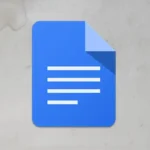When I was still a student, I experienced using social media because one of my science class professor created a Twitter account for our class. If we have any questions about the lesson, we can him them and our professor will answer directly.
Incorporating social media into education can provide learners with a more dynamic and interactive learning experience. The use of social media platforms such as Facebook and Twitter for educational purposes helps to bridge the gap between traditional and online learning, making it more accessible for all students.
In this article, you’ll learn:
How Social Media Improved Education
Social media has made education better in many ways. Let’s take a look at some of the ways.
1. It Enhances Communication and Collaboration
I’m really excited to tell you that social media has improved education because it enhances the communication and collaboration of students from all around the world.
Messaging applications like Messenger have helped learners communicate with their classmates or professors much quicker.
Social media was also very helpful when it comes to collaboration because many students today collaborate with their classmates even when they aren’t able to physically meet up.
There are platforms that they can use such as Google Docs and WhatsApp to share ideas and work on documents together.
2. Students have Easy Access to More Information
Even in the past, there are already tons of information but it was very difficult to access because you need to spend hours in the library searching for books.
But now, we can use social media platforms like Youtube and TikTok to find educational videos that would explain the concepts of that topic.
If you’re having a hard time learning about calculus, there are tons of videos on Youtube about that topic. We just need to make sure that the one who’s teaching has the authority.
There are times when it’s difficult to understand math or science concepts through textbooks. We often struggle because some learners want visual representation like what we see on Youtube.
This is a great example of how social media has improved education because it provided learners with alternative resources and teaching methods that can cater to different learning styles.
3. More Interactive and Engaging for Students
Almost everything today is so advanced that even the education industry has been positively affected by social media. It is more interactive because students today have Facebook groups in their class and every time they have a question, they can easily get feedback.
It is also more interactive and engaging today because social media platforms like Instagram have interactive activities that help students learn.
If they want science-related topics, there are many accounts about that topic and they post interactive quizzes and puzzles for students. It’s like a fun game but students are also learning at the same time.
In the future, I believe that it will be more engaging because virtual reality technologies are starting to rise. It will be an incredible learning experience for them since it will boost their excitement for learning.
4. Broaden Learning through Global Connections
In the past, the education system was only limited to traditional classroom settings. The knowledge of the students was only confined to the resources available within the four walls of their classroom.
Students may now interact with other students and professors from across the globe thanks to the emergence of social media. It exposed them to different perspectives and cultures that they wouldn’t have encountered otherwise.
For example, I’ve seen students today using Skype to connect with students in Japan. They’ve learned about their culture, history, and education system. They even learn how to practice speaking in Japanese.
The exchange of ideas and information has never been easier, we won’t be limited to the ideas of our professor because we can also learn from other experts who can offer us different perspectives or approaches to a particular topic.
5. It can Provide Real-World Learning
There is real-world learning on social media and it has greatly helped our education. For instance, when I was still enrolled in my engineering course, my professor connected us with a subject matter expert who was also working on a research project using social media.
We were able to watch live videos of his work and ask questions so that it would help us in our careers in the future. Because the things we learned in class were put to use in actual job situations, it was an incredible experience.
Students must learn how to use different social media platforms because it’s very helpful if they want to connect with people who work in the field that they are studying.
They can follow their work, read their articles, and learn from their experience. This will greatly help students because practical applications are very useful for gaining knowledge.
Negative Effects of Social Media on Education
Social media has improved education but there are also negative effects that we can’t avoid. Among the list of social media’s negative effects on education are some of the following:
1. Too Much Distraction
Social media can help with our education but there’s just too much distraction. When students are studying for an exam then they suddenly hear a notification from their phone, when they want to check it quickly, they’ve realized that they already spend an hour scrolling.
Different social media platforms are available on the internet and most of them are a major distraction from our studies.
They are made to hold our attention for as long as possible. Too many distractions might quickly result in a lack of attention.
2. Students Might Encounter False Information
There are times when students are doing their school project or research paper, they might come across information on social media that isn’t true. Though social media has a lot of information, students must not rely on it entirely because some of the content here isn’t accurate.
Students must still check credible sources so that it won’t lead to confusion and earn lower grades on their projects. I recall that we had a climate change assignment when I was a student.
I took note of what was going on when I abruptly saw a post regarding the subject on Facebook. I was confident about the source because it came from a famous television news report and they also have a Facebook page.
3. It can Lead to Addiction
It is already proven for many years that social media platforms can lead to addiction and thousands of students are already affected by this issue.
It can negatively impact their education because they can’t focus anymore. Instead of studying, they prefer to scroll through their feeds.
Students today spent less time on their studies and completing their assignments which leads to low academic performance.
I’ve seen many students today spending more time posting their photos and ending up cramming with their assignments. They worry too much about how many people like their posts.
4. Lack of Face-to-face Interaction
Well, as you can see, it seems like the days of traditional methods of learning like carrying heavy textbooks and joining boring lectures are long gone for some students because they don’t want face-to-face interaction anymore.
Students today prefer to type with their phones or laptops, chatting with their classmates because they don’t want to spend some time seeing each other.
It’s not uncommon to hear students say like “Why do I need to bother going to class when I can just chat with my classmate about the topic” or “I’ll just catch up on the lecture recording later, no need to show up in person”.
The way students learn is evolving and from what I see, this is a sign of laziness or a lack of engagement. And who knows, maybe in the future students will prefer to study entirely on virtual reality.
5. Reduced Attention Span of Learners
Social media can seriously reduce the attention span of learners because when they scroll through social media, they tend to jump from one post to another, it already became their habit.
They may find it challenging to concentrate on one subject when learning and instead divert their attention to several other topics.
When the Covid pandemic occurred, classes were done online, but students’ minds then wandered all the time. Instead of listening to the class, they access their social media while the professor is still teaching.
Types of Social Media for Education
I believe that the common social media platforms that are being used for education are Facebook and Twitter. But I’m going to share with you the various types of social media that can be helpful for education.
Social Networking Platforms
Users can communicate with one another and exchange material on these social networking websites. Facebook and LinkedIn are one of the best examples of this since they will be very useful for education.
There are many Facebook groups out there that can help students with their studies. Those groups are also made for certain topics like science or math. These groups are great resources if students have concerns about their assignments or research.
Video Sharing Platforms
Have you ever watched a video online to help you with your studies? Well, I did. There are a lot of videos that I’ve watched on Youtube during my college days because some experts in my field are putting great content out there.
Increasingly more people are using video-sharing websites like Youtube and Vimeo since they feature a large selection of instructive videos. If students are having trouble with their academics, they should go to these sites.
The visual learning experience is the reason why students love this kind of platform. It’s difficult for them to learn through reading when they see it in action, it becomes much easier.
Podcasting Platforms
This is another type of social media that is helpful for education. This platform is like a radio show, but instead of being broadcast over the airwaves, it’s available to stream or download. If students wish to learn something new on a specific topic, they can find it on podcasts.
Podcasting platforms like Apple Podcasts and Spotify have made it easier for educators to share their knowledge and expertise with a wider audience.
I consider podcasts as a supplement for learning because it provides additional resources for students. Podcasts can also explore topics in depth and it is very updated.
Collaborative Editing Platforms
The collaborative editing platform that I always used when I was still studying was Google Docs. Because it allows numerous individuals to work on the same document at once, this was tremendously beneficial to my schooling.
But let me tell you that the benefits of collaborative editing platforms can go beyond just convenience because these platforms teach valuable lessons like communication and organization.
You just need to make sure that you are on the same page when you’re working with your peers.
Blogging Platforms
Blogging platforms are a great tool for education because it allows students to express their ideas and opinions. The article that you’re currently reading right now is an example of a blog.
In a blog, you can write your favorite topic then people from different parts of the world can read it and leave their comments.
The good thing about blogging platforms is that they can improve your writing skills and creativity which then you can apply in your class.
Blogging platforms can also serve as an online portfolio for students if they want to showcase their work to their employers in the future.
Common Social Media Platforms Used in Education
Here are some of the common social media platforms that I believed are being used always by students and educators:
- Facebook: Facebook is one of the most widely used social media sites in the world. Many colleges and universities have Facebook accounts where they may publish updates, announcements, and activities. Students and instructors may also use Facebook to form study groups and discussion forums where they can share ideas and work on projects.
- Twitter: It’s easy to share news and updates on Twitter. A lot of educators use Twitter to provide teaching tools, link to intriguing articles, and have dialogues with other educators.
- Youtube: The video-sharing website YouTube is a fantastic source for tutorials and instructive films. Many instructors utilize YouTube to make instructional films for their pupils and to add instructive videos to their classes.
- LinkedIn: College students and new graduates frequently utilize the professional networking site LinkedIn. It is a fantastic resource for finding a job, networking with industry peers, and discovering other career paths.
- Instagram: Instagram is a popular photo and video-sharing network among students. This is being used by instructors to publish photos or videos about school events or projects. They also use this if they want to promote the work of their students using hashtags.
If utilized responsibly, these social media sites may be highly beneficial for education. For how many years, they provide a platform for collaboration and sharing of educational resources.
Final Thoughts
I can’t help but be grateful for the opportunities that technology has offered us. I never envisioned social networking as a tool that would aid pupils in their academic pursuits when it was created.
While there are certainly negative effects, the way it helped us with a lot of things can’t be overlooked.
I also experienced being a student and I am excited for the future of education. The possibilities that social media could bring for our learning.
I hope that the future generation will use social media responsibly for their learning because it could surely give them lots of opportunities.










